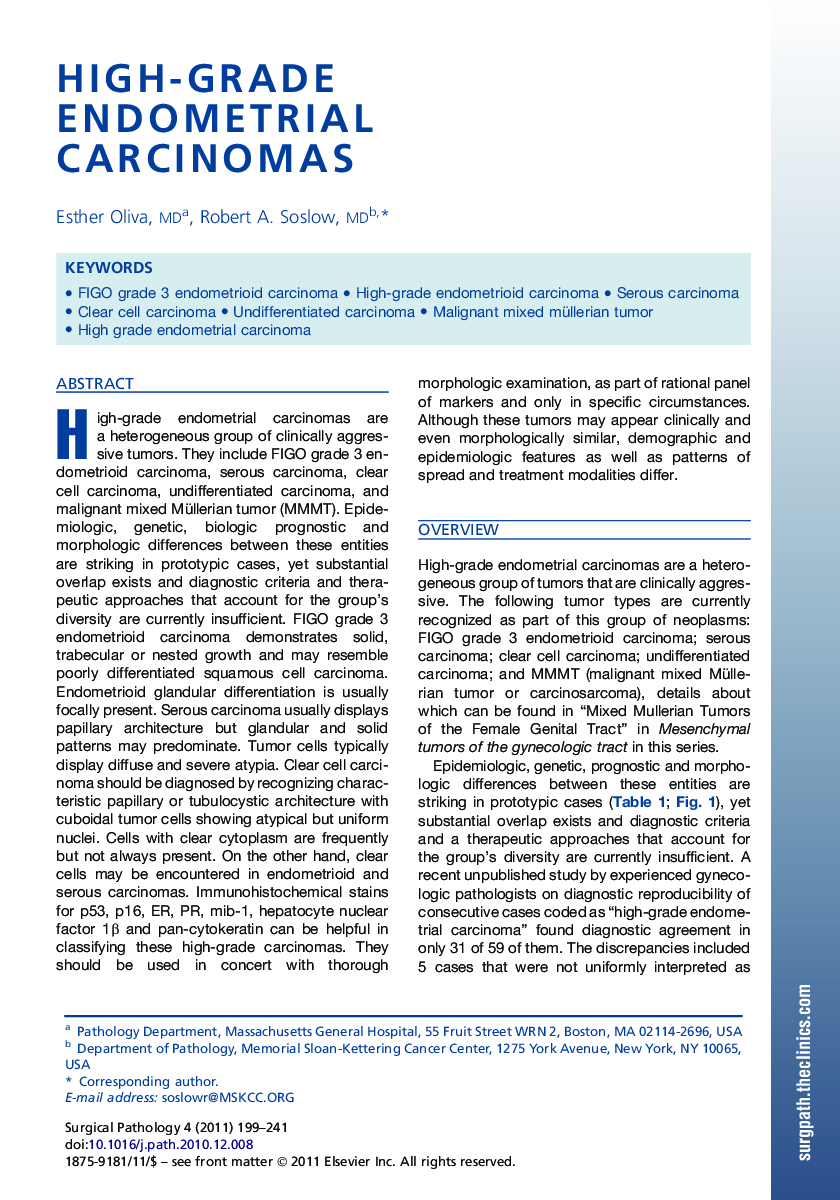| Article ID | Journal | Published Year | Pages | File Type |
|---|---|---|---|---|
| 3334584 | Surgical Pathology Clinics | 2011 | 43 Pages |
High-grade endometrial carcinomas are a heterogeneous group of clinically aggressive tumors. They include FIGO grade 3 endometrioid carcinoma, serous carcinoma, clear cell carcinoma, undifferentiated carcinoma, and malignant mixed Müllerian tumor (MMMT). Epidemiologic, genetic, biologic prognostic and morphologic differences between these entities are striking in prototypic cases, yet substantial overlap exists and diagnostic criteria and therapeutic approaches that account for the group's diversity are currently insufficient. FIGO grade 3 endometrioid carcinoma demonstrates solid, trabecular or nested growth and may resemble poorly differentiated squamous cell carcinoma. Endometrioid glandular differentiation is usually focally present. Serous carcinoma usually displays papillary architecture but glandular and solid patterns may predominate. Tumor cells typically display diffuse and severe atypia. Clear cell carcinoma should be diagnosed by recognizing characteristic papillary or tubulocystic architecture with cuboidal tumor cells showing atypical but uniform nuclei. Cells with clear cytoplasm are frequently but not always present. On the other hand, clear cells may be encountered in endometrioid and serous carcinomas. Immunohistochemical stains for p53, p16, ER, PR, mib-1, hepatocyte nuclear factor 1β and pan-cytokeratin can be helpful in classifying these high-grade carcinomas. They should be used in concert with thorough morphologic examination, as part of a rational panel of markers and only in specific circumstances. Although these tumors may appear clinically and even morphologically similar, demographic and epidemiologic features as well as patterns of spread and treatment modalities differ.
